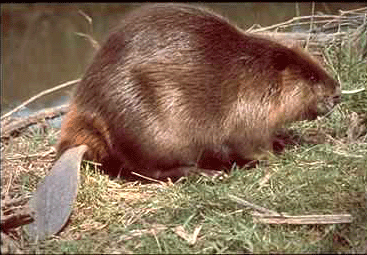 Transplant 25 pairs of beavers from their native North America to the southernmost part of South America, wait 61 years, and what do you get?
Transplant 25 pairs of beavers from their native North America to the southernmost part of South America, wait 61 years, and what do you get?
Entire forests of 300- to 400-year-old trees wiped out by a beaver population estimated at more than 100,000.
That's why one wildlife biologist from Bismarck spent two weeks on Tierra del Fuego last month as part of an international team of experts, who got a first-hand look at the massive destruction.
John Paulson, a district supervisor for the U.S. Department of Agriculture Wildlife Services in Bismarck, was among the four wildlife managers who were brought in to work up a feasibility study on eradicating the beavers, which are considered an invasive species in South America.
The leader of the four-person team was a Ph.D. from New Zealand. One team member was a Ph. D. from Australia and another a Ph.D. from Cornell University in Ithaca, N.Y.
"All three are experts in the field of eradicating invasive species off of islands," Paulson said in an interview Wednesday. "I was honored to be with these guys."
What Paulson, who earned a bachelor's degree in wildlife management from the University of Minnesota, brought to the table was 20 years of working with beavers and a background in explosives.
"If we are going to bring any habitat back, we have to remove the beaver dams," he said. And blowing up the dam is the simplest was to dismantle the dams.
The trees most impacted by the beaver assault are the lenga, or white beech, Paulson said.
"They are a very sensitive tree to water, and the flooding from beaver dams is killing the trees," Paulson explained.
Unlike cottonwoods and similar trees in North Dakota, draining the water hasn't brought the lengas back.
"What they are seeing is zero revegetation," Paulson said.
And those beaver dams also are hurting tourism in the region, which is a destination for fly-fishers in search of trophy trout. Beaver dams prevent trout from migrating to spawn.
The island of Tierra del Fuego, which is about a third of the size of North Dakota, also is bustling spot for tour ships and penguin-watching.
"Skiing is big, too. There are ski resorts. It is on the southern tip of the Andes Mountains," Paulson said. Antarctica is only 300 miles south of Tierra del Fuego, he added. There also is a small timber industry.
"But it's the ecosystem damage that's so devastating," he said.
With no natural predators, and only a few trappers working the area, beavers are booming. Estimates put beaver colonies, or families, at one per linear kilometer of stream. No comparable numbers exist for North Dakota's beaver population, but Paulson guesses maybe one beaver colony per five to 10 miles of North Dakota waterway.
Their hosts flew and drove the team members over and throughout the region.
"The destruction and devastation there is far more than we see in the U.S.," Paulson said. "It was such ideal habitat when the beavers were brought over: food, shelter and water."
Their workdays typically started about 8 or 8:30 a.m. and ended about 8 p.m. Dinner, as is typical is the region, was after 9 p.m.
"I ate a lot of things I didn't know what I was eating, but all of it was good," Paulson said. "I certainly didn't lose any weight."
Spring was just starting during the team's trip. "The climate is similar to ours, but the winter is only two to three months," he said.
Paulson was one of two on the team who didn't speak Spanish.
"They had translators at all of the meetings. You'd get the meaning of what they said, but never all of it," he explained.
He also had praise for the resident biologists that had been dealing with the problem.
"Some talented biologists live there. They were very knowledgeable, cooperative and accommodating. We were treated hospitably, and we worked hard," he said.
The governments of Chile and Argentina paid for their trip, meals and lodging.
Beavers are working their way northward.
"They have found a few colonies on the peninsula (of mainland South America), and fishermen have caught beavers in their nets that were swimming from the island (Tierra del Fuego) to the peninsula," Paulson said.
Here is the full article.
Thursday, November 29, 2007
Fighting the beaver invasion in South America
Posted by
Patagonia Under Siege Editor 1
at
11:58 PM
![]()
Labels: Conservation